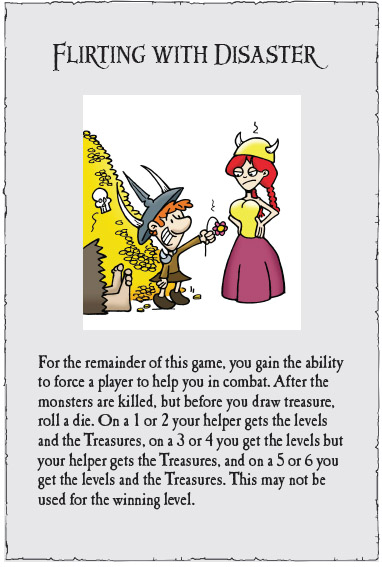HOW PLAYING
MUNCHKIN MADE ME
A BETTER GAMER
Christian Lindke
“The great objection to infant gamers is not their age
as such; it’s their influence on the market. So long as
companies can survive by churning out solo adventures
and talking down to customers, there will be no
incentive for them to produce material that really
emphasizes skilled role-playing, and the hobby’s image
will remain ludicrous. Even WHITE DWARF is not
immune to the plagues of juvenilia. If the twelve-year-
olds can’t play properly, why should we encourage them
to play at all? Leave them until they are 16 (at least).”
—Phil Masters, White Dwarf #73 (January 1986)
I’ve been a fan of Munchkin from day one. My library has a shelf devoted to the ever-expanding series. If you could travel back in time to interview an earlier version of “gamer Christian,” however, he wouldn’t believe that he could ever come to love a game with that title.
I don’t know precisely when the term munchkin was first used to describe a style of play. It came into fashion in the late ’70s and early ’80s as more young players entered the hobby. Unsurprisingly, publishers jumped on the trend and began producing products such as the Dungeon! boardgame and Fighting Fantasy gamebooks, which were expressly aimed at this new audience. Some older gamers were reluctant to accept younger players and the play style they seemed to favor, and started calling them munchkins.
It’s true even today that many youngsters gravitate toward what Robin Laws and Glenn Blacow identify as “power gaming” – focusing on killing monsters, stealing loot, and getting more powerful by overtly manipulating a game’s rules. Some don’t like this play style because it tends to dominate other, more narrative-focused styles, and if the power player is young and inexperienced in some of the social niceties of gaming with others, conflict between players can become more likely. It’s a legitimate concern, but press the most ardent critics of power gaming and you’ll sometimes find folks who think there is a right and wrong way to play. And the munchkin style of play is, to them, definitely the wrong way.
For a time I was one of those munchkin haters. I believed that game sessions were to be taken seriously and that players should focus either on creating a deep narrative or making complex tactical decisions. I thought that power gamers were self-centered and incapable of working with others to create a positive shared experience. If someone wanted to be a True Gamer, they had to play “the right way.”
I picked up this notion with my first RPG experience, which was run by a munchkin-hating gamer. I was 11. After years of playing Candy Land and Operation, and building imaginary landscapes with LEGOs, I was eager to experience the joys of this new type of game – the RPG. The media-fueled mystique about Dungeons & Dragons had something to do with my enthusiasm. The moral panic about D&D was in full swing and I wanted an opportunity to play this mysterious game where you could be heroes like those I’d encountered in fiction and in film.
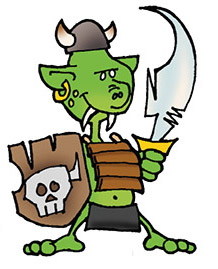
It’s almost painful to think back to that first adventure. The GM was a friend of a friend, someone I didn’t know all that well. But he supposedly understood how to run a D&D game and, more importantly, was willing to let a pair of preteens – me and my friend Sean – join in the fun. Once we got the okay, Sean created character sheets for us. He would play as Aragorn, the valiant ranger, and I would be Gandalf, the powerful wizard.
The adventure opened as many fantasy roleplaying adventures do: “You meet up at a tavern,” the game master announced. The descriptions the GM used were good, but I was more than ready to fill in the details myself once the adventure got underway. I used my imagination to create a detailed medieval tavern. (To this day, I can still conjure up this imagined watering hole in my mind’s eye.) As things moved along, I was a little surprised to find that the game master wasn’t working from any notes; the plot he created was clearly ad-libbed. He made up rules on the spot, too. I had never played D&D before, but I knew the game had rulebooks. There wasn’t a rulebook to be seen at our table. I was also pretty sure that D&D used dice, but our GM never rolled dice, not even when our characters were attacked by the monsters we encountered in the stereotypical deep, dark dungeon we’d set off to loot.
Within minutes we had slain a patrol of orcs and acquired their treasure. It was not a large trove, but the game master informed us that it contained a scroll. Gandalf was the only magic-user in the group, so I took it. I looked up at the game master and said, “I read the scroll to see what’s on it.” The game master looked at me with a wry grin and said, “You’ve been polymorphed into an axe beak. Hand me your character sheet.”
We all took a break at that point. I didn’t know what an axe beak was, so Sean and I went to his room to find a copy of the Monster Manual. When I saw the picture of the creature, I was heartbroken. I wanted to play as a powerful wizard, but now I was being forced to play as a goofy-looking animal. Gandalf was supposed to fight Balrogs, not stand around as some oversized, flightless bird. I heard the older gamers laughing at my predicament. That made me feel even worse.
I ended up staying in Sean’s room. My personal “right” way of playing never allowed for the possibility of the absurd, and I felt mocked and dejected. Why bother going back to the game at all? Sean, being a good friend, stayed with me so we could play with some of his He-Man action figures. The more serious players continued the adventure without any interference from the kids.
I made the wrong choice. I did not embrace my inner munchkin.
If I had fully embraced it, I could have pulled a Robert E. Howard and made the character the most powerful axe beak in the world. Legends would have been told of Gandalf the Axe Beak, wielder of the Sword of Kas, destroyer of Magistherion’s bane.
I call this “pulling a Robert E. Howard” after the pulp adventure master’s contribution to “The Challenge from Beyond.” Howard cowrote the story with C. L. Moore, Frank Belknap Long, A. Merritt, and H. P. Lovecraft. Each author created a short section that ended in such a way as to leave the next author in a difficult spot. Howard had the challenge of following Lovecraft, who had turned the protagonist into a loathsome and gigantic pale-gray centipede. Instead of crafting a Lovecraftian scene where the protagonist weeps in madness, or walks away in defeat like I did at the D&D game, Howard turns the protagonist into the god-killing king of all the worm men.
He fully embraced his inner munchkin.
Sociologist Roger Caillois, in writing about play, lists four main classifications for the play experience. In his model, play can be divided into competition (agôn), chance (alea), vertigo or dizzying euphoria (ilinx), and simulation (mimicry). While most who use Caillois’ typology assume that games are primarily composed of competition and chance, agôn and alea, playing Munchkin taught me that many of my favorites incorporate elements of all four categories. The way in which those elements balance out in any individual game is controlled by the designer and also by the players.
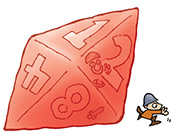
To some, roleplaying games are primarily a competition, a contest between the game master and the players. The GM controls all of the bad guys and monsters, while the players control the heroes. A fair application of the rules determines the outcome. Chance enters the picture through the use of dice, but this sort of game play is more agôn than alea. It can be an enjoyable experience, to be sure, but game masters who view themselves as an antagonist to the players often fall into the competition trap. They seek to defeat the players to the detriment of every other aspect of the game, and they find it rather easy to succeed, since the GM’s chance of victory is limited only by the whims of chance and the roll of the dice. This was a common mindset among game masters in the early days of RPGs – so common that Gary Gygax called out hyper-competitive GMs as “unscrupulous” and “unenlightened” in his book Role-Playing Mastery.
Fortunately, this isn’t the only way to play RPGs. I rejected the strictly agôn paradigm early in my roleplaying career. So did my friend Sean. After our first misadventure with D&D, we tried eliminating the living game master completely. We played published modules as if they were solo tactical wargames, with our player characters working their way through the preplanned scenarios. This took care of the unenlightened and adversarial GM, but failed to satisfy our need for storytelling. Our play with the Masters of the Universe toys was more rewarding in that regard. We didn’t realize it at the time, but the action figures allowed us to fluidly move between player and game master, alternating roles. We told collaborative stories where we challenged the characters, but not always in a strictly competitive way.
For the next few years I immersed myself in a variety of play experiences. I participated in baseball and soccer, and I tried out a wide variety of roleplaying games: Dungeons & Dragons, Tunnels & Trolls, Star Frontiers, and Top Secret. At first glance, they’re very different kinds of experiences. Sports require rigorous physical activity, while roleplaying and other games are primarily mental activities. Stealing a base and scoring a goal are physical achievements. They also create moments of ilinx, or vertigo. Soccer is a relatively predictable contest of ordered action as passes are made between players, but it is in moments of disruption that goals are scored. The scoring player feels an almost dizzying euphoria, caused by the successful disturbance and reversal of play up to that point. If you’re a dedicated player, few emotional experiences compare with that euphoria, but the underlying sensation of vertigo isn’t unique to that sport.
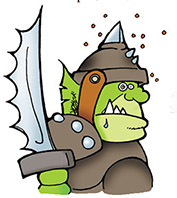
Nor is that feeling exclusive to sports. The ilinx you experience when scoring a goal is similar to the feeling you get when you successfully defend a vastly outgunned territory in Risk. You have only a single unit and your opponent has dozens massed at the border. You’ve not only beaten the odds when you defeat them, through a successful manipulation of alea (chance); you’ve created a moment of chaos by wiping away the most predictable outcomes. In both cases, the player experiences a rush of adrenaline and a mental state akin to vertigo. In the tabletop gaming environment, many games provide opportunities for reversal and chaos that create this sense of ilinx.
I was playing Munchkin when I first recognized how often a game could create emotional ilinx on a regular basis, one that wasn’t always dependent on alea. The game itself is chaos and certain combinations of cards only add to the emotional vertigo, but before that revelation, I had to complete my quest to discover the “right” way to play.
My friends and I were still focused on games that were primarily a combination of competition and chance, with the occasional thrill of ilinx, but very little use of what Caillois identifies as simulation, at least overtly. We were unaware that we were incorporating the concept of mimicry in our play, nor would we have thought we were had someone asked us. We weren’t openly adapting the stories we had read or the shows that we watched. Even our collaborative He-Man games didn’t mirror the cartoons. Their narratives could be reduced to the simple formula of “open the door, fight the monsters inside the room, and take their stuff.” While both wargames and action figure play incorporate Caillois’ concept of mimicry, each form of play only highlighted half of what mimicry could be. The tactical wargames mechanically simulated the action of the conflict, while the improvisational play incorporated the narrative aspects of mimicry.
It wasn’t until I’d read and played the Fighting Fantasy gamebooks by Ian Livingstone and Steve Jackson (the UK Steve Jackson) that I began to see how gaming could incorporate mimicry in a meaningful way. In my earliest RPG experience I had borrowed Gandalf’s name, but the modeling stopped there. The fluid integration of game rules into the storytelling in the Fighting Fantasy series demonstrated how familiar narrative tropes could be wedded with mechanics to create a more immersive gaming experience. My initial forays into narrative gaming were quickly expanded when I learned how to play Champions, Marvel Super Heroes, and DC Heroes. Each of these RPGs contains a section about how to turn roleplaying sessions into narrative experiences. Games were about stories.
I had mastered all four of Caillois’ classifications.
I was now, at last, a Very Serious Gamer.
And I needed Munchkin to help me have fun again.
Somewhere around the time I was going through my superhero RPG phase, I became a fan of John Kovalic and his Dork Tower comic strip. (To this day, Kovalic is my second favorite cartoonist; my favorite is my wife, Jody, but that’s another story.) It was due to my love of Dork Tower that I purchased my first copy of Munchkin.
While the tagline “Kill the Monsters • Steal the Treasure • Stab Your Buddy” didn’t particularly appeal to me – I’ve never been a big fan of screw-your-friends games – there was something about the chainsaw-wielding kid on the cover that did. I saw in him the polar opposite of the mopey magic-user who quit when he was transformed into a monster.
Opening the box, I found more tonic for my gaming soul. As I flipped through the cards, I came across “Pollymorph Potion,” which depicts a hapless dragon being changed into a parrot. The bemused, disappointed look on the poor bird’s face perfectly represented my own reaction to Gandalf’s fate in my first RPG experience. It was almost as if Steve Jackson or John Kovalic had been participants in that long-ago game – or, more likely, they had sat through games where ilinx had reared its vertiginous head and dashed their hopes, too. Their answer to those kinds of disappointments is the real lesson here. They rush forward to embrace the impossible and the absurd, to answer the overly serious with whimsy.
As a game, Munchkin itself is quite simple. It simulates the dungeon crawl adventure so common among neophyte gamers: kick down the door, slay the monster, steal its stuff, level up, repeat. As a Very Serious Gamer, I’d come to believe that this simple narrative was monotonous and empty, but Munchkin transforms it into a zany good time.
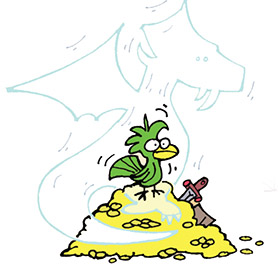
There’s more than jokes at work here, though. Munchkin features simulation, chance, and competition, and adds humor to the equation to create euphoric laughter. While the “open door, kill monster, take its stuff” routine forms the basis of play, the game quickly shifts gears as players get more powerful. What begins as an enterprise of several solo adventurers seeking to make a quick profit transforms into a heated scrum where players ruthlessly undercut one another. Because Munchkin ends if a player reaches level 10, as soon as one player attains level 7 or so, they are now actively and directly battling against the other players. Here, the play is about preventing others from winning. It is during this highly competitive and fast-paced endgame that some of the most humorous and absurd card combinations come in to play. How much can you really complain when you’re prevented from winning, at least temporarily, because you’ve been wiped out by an Intelligent and Enraged Maul Rat armed with an Electric Radioactive Acid Potion? In my case, not much.
It’s hard to imagine a session of Munchkin that doesn’t result in a wild story you can tell the next time you’re trying to recruit new players. The interaction of the cards creates narrative absurdities that beg to be shared. And the possibilities are multiplied when you combine cards from the various sets and expansions. Best of all, the glorious madness of those tales stands as a reminder to even the most serious Very Serious Gamer: be open to disruption and surprise.
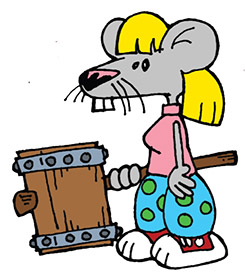
Around the time that Munchkin was released, the third edition of Dungeons & Dragons also saw publication. When I came to D&D this time, I did so with the lessons that I had learned from Munchkin. It was remarkable. I was finally able to create the gaming experience I had hoped to have as a youth. The post-Munchkin me was looking beyond the agôn, alea, and mimicry of my older play styles and attempting to find a way to add ilinx to every gaming experience.
Munchkin is a great game in its own right, but it is a game that can change the way that you play other games. In Robin’s Laws of Good Game Mastering, Laws notes that one of the best ways to play a game is to make the experience as entertaining as possible for all participants.
Munchkin made me a better gamer, and if you’re open enough to the wild and wonderful experience, it can make you one, too. 
Christian Lindke is a renaissance geek whose motto is, “I can geek out about anything . . . except for Filk-singing.” When he isn’t working his day job as a nonprofit program director, or working on his PhD in political science, he can be found participating in one of his many hobby-related activities. He might be writing a new article for the Robot’s Voice website or hosting an interview on his Geekerati podcast, which features interviews with screenwriters, game designers, and medieval historians. You might also find Christian working on his Advanced Dungeons and Parenting blog, though over time that seems to have much less to do with parenting than he intended. More often than any of that, Christian is probably playing games with either his regular gaming group or with his wife, Jody Lindke, and their twin daughters.
